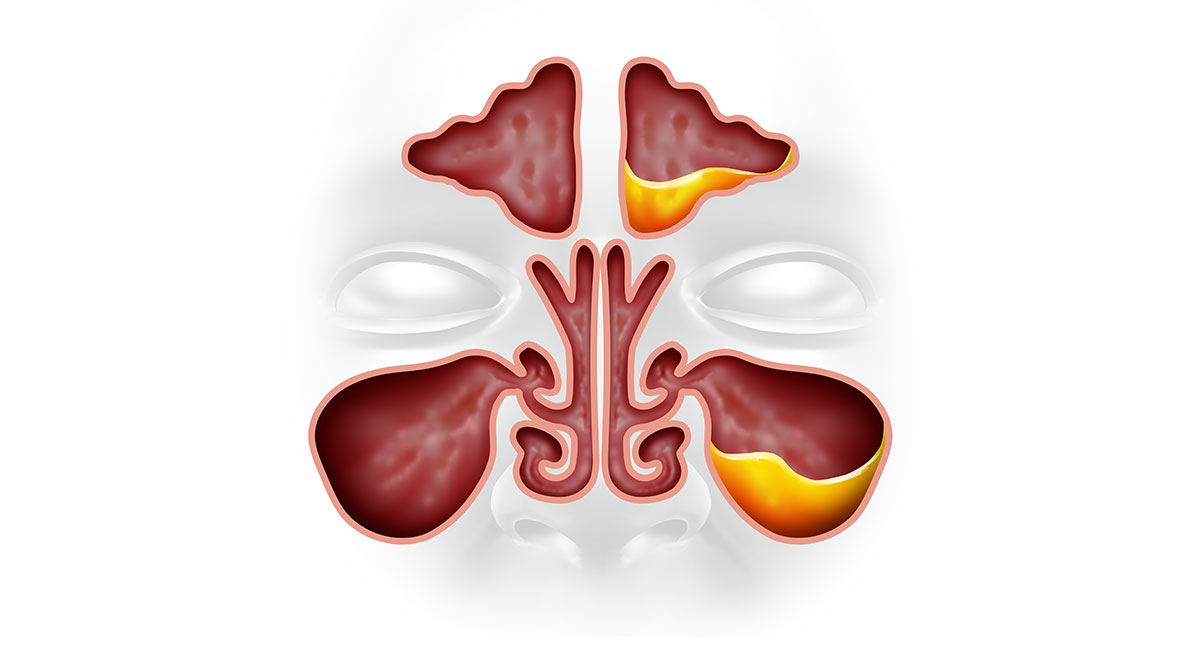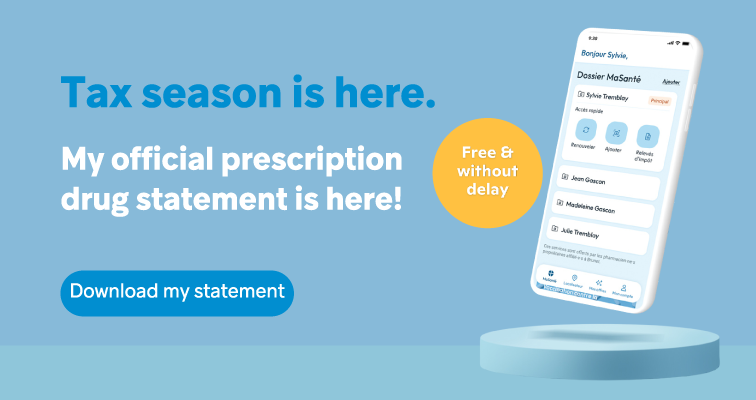Headaches, uncomfortable pressure, stuffy nose—all of these symptoms can be caused by sinusitis, or sinus inflammation. What causes sinusitis? What’s the difference between viral and bacterial sinusitis? And most importantly, how can you relieve your symptoms? Let’s take a closer look.

What is sinusitis?
Sinusitis is an inflammation of the sinuses that is usually caused by a viral infection. It can also be the result of a bacterial infection or allergies. It generally affects the maxillary sinuses, which are located above the cheeks, but can also impact other sinus groups (ethmoid, frontal, or sphenoid).
The role of the sinuses
Sinuses are air-filled spaces in the skull located around the nose and eyes. They’re connected to the nasal cavities, which allow mucus to flow out of the nostrils. The sinuses humidify and warm the air we breathe in and play an essential role in protecting the airways. The mucous membranes in the sinuses produce mucus, which forms a protective barrier against viruses and bacteria.
During an infection, the body triggers an inflammatory response to defend itself. The mucous membranes in the sinuses swell, and mucus production increases to trap and eliminate infectious agents. This inflammation can obstruct the passages that connect the sinuses to the nose, preventing mucus drainage. The build-up of mucus in the sinuses causes increased pressure, leading to pain and other symptoms typical of sinusitis.

What’s the difference between acute and chronic sinusitis?
Acute sinusitis and chronic sinusitis are distinguished by their duration.
- Acute sinusitis lasts for less than 30 days and is often the result of a viral infection, such as a cold. It can sometimes be caused by bacteria.
- Chronic sinusitis lasts for more than 90 days and is often associated with prolonged inflammation caused by allergies, nasal polyps, a chronic infection, or exposure to environmental irritants (pollution, tobacco smoke). Sometimes it’s hard to pinpoint the cause.
What are the symptoms of sinusitis?
Here are the main symptoms of sinusitis:
- Headaches
- Pain in the face or teeth
- Nasal congestion
- Nasal discharge (clear, yellow, or green)
- A wet cough, especially at night
- Partial or total loss of smell
- Bad breath
- Fever
How can you tell whether sinusitis is caused by a virus or bacteria?
Only a doctor can make a diagnosis. However, here are a few clues that can help you determine the cause of your sinusitis:
- Viral sinusitis: This is the most common form of sinusitis. It’s often associated with a cold or other respiratory infection. In most cases, symptoms clear up within 7 to 10 days. If they persist beyond 10 days, you may have developed a bacterial infection.
- Bacterial sinusitis: This type is less common and sometimes develops after a viral infection. Cavities or dental abscesses close to the maxillary sinuses may also be the culprit. The symptoms of bacterial sinusitis are often more severe than those of viral sinusitis: thicker, yellow or green mucus; more pain; and a high fever. Unlike viral sinusitis, bacterial sinusitis doesn’t usually clear up on its own. If your symptoms worsen or persist beyond 14 days, we recommend consulting a doctor. They may decide to prescribe you antibiotics.
What can you do to relieve and prevent sinusitis symptoms?
Here are a few ways to relieve your symptoms:
- Rest to help fight the infection.
- Stay hydrated by drinking plenty of water and hot beverages.
- Make sure the air in your home is humid enough (use a humidifier if needed).
- Rinse your nasal passages with a saline solution.
- If necessary, take acetaminophen or ibuprofen to help with the pain and lower your fever.
- If you’re congested, make sure not to over-use decongestants.
Here are a few habits that can help reduce the risk of developing sinusitis:
- Get vaccinated against common viral infections, such as the flu and COVID-19.
- Wash your hands frequently.
- Avoid exposure to tobacco smoke or pollution.
- Maintain good nasal hygiene by using a saline sinus rinse.
- If you suffer from allergies, it’s a good idea to see a specialist to help you manage them.
When should you be concerned and consult your health care provider?
Most sinus infections are viral and get better on their own in 10 to 14 days, without the need for antibiotics. However, it’s best to see a doctor in the following cases:
- Your symptoms haven’t improved after 14 days
- You have a fever above 38.6 °C that won’t go down
- You have intense sinus pain
- You have intense headaches
- You have signs of a skin infection (redness, swelling)
- Your symptoms improve, then get worse
Brunet-affiliated pharmacists are here to help you manage your health
Your pharmacist can:
- Assess your symptoms
- Recommend appropriate treatments for your symptoms, taking into account any medications you’re already taking
- Refer you to a health care professional if necessary
Schedule an appointment at your pharmacy for assessment and management of your sinusitis symptoms.
You may also be interested in these articles
Posted on February 24, 2025
Take advantage of in-pharmacy services!
